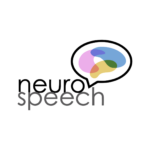Link to Pubmed [PMID] – 41006626
Link to DOI – 10.1038/s43588-025-00876-9
Nat Comput Sci 2025 Sep; ():
Unraveling how humans understand speech despite distortions has long intrigued researchers. A prominent hypothesis highlights the role of multiple endogenous brain rhythms in forming the computational context to predict speech structure and content. Yet how neural processes may implement rhythm-based context formation remains unclear. Here we propose the brain rhythm-based inference model (BRyBI) as a possible neural implementation of speech processing in the auditory cortex based on the interaction of endogenous brain rhythms in a predictive coding framework. BRyBI encodes key rhythmic processes for parsing spectro-temporal representations of the speech signal into phoneme sequences and to govern the formation of the phrasal context. BRyBI matches patterns of human performance in speech recognition tasks and explains contradictory experimental observations of rhythms during speech listening and their dependence on the informational aspect of speech (uncertainty and surprise). This work highlights the computational role of multiscale brain rhythms in predictive speech processing.




